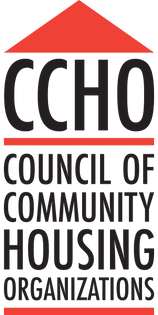Affordable Housing Lags Far Behind High-Income Housing, Report Shows
It’s been clear for years that the city must build more housing but a new city report finds that high income housing is exceeding needs while affordable housing needs a dramatic boost.
While housing production is behind population growth, more focus has been placed in recent years on low and moderate-income housing, as seen in the city’s first “Jobs-Housing Fit” report released by the Budget and Legislative Analyst’s Office on Wednesday.
“The reality is that low and middle income workers get overlooked and are forced to move to the fringes of the region,” said Fernando Marti, co-director of the Council of Community Housing Organizations, in a statement. “This Jobs-Housing-Fit report reinforces that the ‘build, build, build’ as much market-rate housing as possible approach, with the idea that it will filter down to benefit all income levels, has failed.”
The report, requested by Supervisor Gordon Mar, found that San Francisco must build 15,629 units for low income earners — people making 80 percent or less of the area median income (AMI), about $69,000 a year or less — from now until 2026, but only 1,626 are in the pipeline. About 3,387 units for moderate income earners — those between 80 to 120 percent AMI, about $103,00 annually for one person — are needed but just 577 are planned.
On the other hand, housing for people earning more than 120 percent AMI has 18,627 units in the pipeline. San Francisco is expected to need 14,022 units of such housing through 2026. Since 2010, San Francisco has seen a 23 percent decrease in housing for low-income earners, an eight percent decrease for middle-income earners, and 44 percent increase for high-income earners.
This is great for the engineers and lawyers but not so much for construction and maintenance workers, educators, retail and food employees, drivers, janitors and others who make the city run.
“The economic boom in the city doesn’t just rely on tech workers, it relies on people like me to make food, clean homes and take care of elders,” said Erika Chavez, a domestic worker with La Colectiva. We all deserve to live here, too.”
The report comes as a fewer major fixes are proposed. The November election could bring $600 million in funding for affordable housing through Proposition A while Proposition E would allow 100 percent affordable and educator housing to be built on public land.
But Supervisor Matt Haney’s proposal to boost jobs-housing linkage fee gets straight to the matter. The city imposes fees on developers for a variety of funds by square footage but the fee on office space for affordable housing is based on what advocates call an outdated 1997 Nexus study that was updated earlier this year.
Haney’s legislation to more than double the fee to $69.60 per gross square foot was approved by the Planning Commission in September, against the Planning Department’s recommendation. Most of the $19 million collected from the jobs-housing linkage fee between June 2016 and June 2018 have already been spent.
After a Board of Supervisors Land Use and Transportation Committee hearing on Oct. 21, the legislation was amended to take effect over two years with different tiers. It will go before the entire Board of Supervisors for a vote on Oct. 29.
Developments related to the jobs-housing link also comes nearly a year after the Central SoMa plan was approved to bring 33,000 more jobs and 8,000 housing units to the area. To keep better track of impact of jobs on housing, Mar will introduce legislation to require a similar annual report by the Planning Department.
“It’s time we face the data when making economic policy and land use decisions,” Mar said, “and it’s time to confront housing and other impacts on low and moderate-wage workers and families.”
